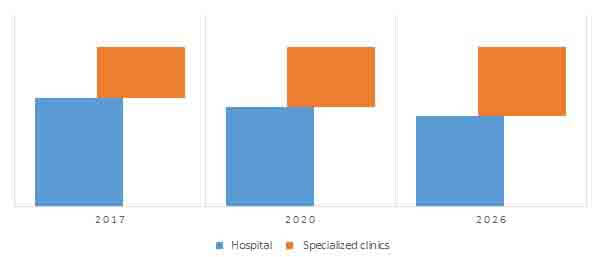Impedance-pH Reflux Measurement Market Segmented By component type that is Recorders, Catheter used in Hospital, Specialized clinics.
Industry: Healthcare
Format: PPT*, PDF, EXCEL
Delivery Timelines: Contact Sales
Report Type: Ongoing
Report ID: PMRREP22927
The procedure of measuring reflux with an impedance-pH came into existence with a regular shift in new technologies surrounding the gastroenterology sector. Gastro-esophageal reflux disease (GERD) or acid reflux happens when stomach contents flush back into the esophagus causing heartburn, vomiting and chest pain.
Earlier, traditional models were used to measure the acidic pH value of the esophageal tract, which helped in limited diagnosis. With advancements in technology, impedance-pH detects both acidic and non-acidic reflux episodes. The advancements resulted in the development of a new device which is more diverse in nature, it can perform the task by distinguishing between acid GER, non-acid GER, superimposed acid reflux, gas reflux, height of reflux, chemical clearance, bolus clearance and postprandial GER.
Practically, there are different types of devices working for the same purpose of treating GERD patients with equal advantages and disadvantages. Models based on the impedance-pH reflux consists a recorder, which acquires the input received from the probe and applies the algorithm present.
A catheter is directed into the body in order to obtain the readings with the help of an electrode. The software after data acquisition provides a platform to analyze the readings observed.

The reflux formed in the esophageal tract is measured by a catheter or a probe, which is directed to the body and is passed trans-nasally, preferably without sedation, although the use of local anesthesia (e.g. intranasal anesthetic spray) may be beneficial in some cases.
Gel is often used to ease the passage of the catheter through the nostrils, however, the gel should not be placed directly on the electrode as the presence of gel on the probe may decrease its accuracy. Catheters of different physical form and varying pH electrodes are commercially available.
Major electrodes for impedance-pH reflux measurement available are antimony, ion-sensitive field-effect transistor, glass electrode. Antimony electrode are less accurate than glass and ISFET electrode, but are majorly used in construction of the catheters because of its cost (vs. glass) and ease of insertion (vs. ISFT).
The market for impedance-pH Reflux measurement market is expected to be driven by the advancement in technology. The market is observing an increase in incidence of gastroenterology.
With increasing infant numbers, impedance-pH Reflux measurement is an easily accessible tool for GERD procedures to be used in infants and children, which portrays a holding point in driving the market of impedance-pH reflux measuring units. However, impedance-pH monitoring is a time consuming procedure because of the manual labor involved, and the data analysis of the result obtained needs skilled judgment.
North America is one of the dominant regions in the global impedance-pH reflux measurement kit market mainly due to increased acceptance of impedance-pH reflux measurement kits by the end users. In North America, the U.S. is the dominating country due to the high penetration of the impedance-pH reflux measurement kits among the existing market.
Economic conditions in the APEC region are set to drive the impedance-pH reflux measurement kit market to a new level. China is considered a growing region due to rising awareness and small regional markets of impedance-pH reflux measurement kits.
The prevalence of GERD is increasing worldwide although there are marked differences in the reported prevalence, in 2015, ranging from 2.5% to 6.6% in Eastern Asia up to 13.8% to 25.8% in North America which is increasing the market of impedance-pH reflux measurement.
Examples of some of the key participants in the global impedance-pH reflux measurement kit market are Sandhill Scientific, MMS, Ebneuro, LABORIE and Medtronic. The companies are mainly focusing on R&D to support their core abilities to grow their product.
Even the most complicated impedance-pH reflux measuring systems are built in a modular way to perform task in both simple and research format. Some of the companies are offering impedance-pH reflux measuring kit for training purposes in research laboratories.
| Large- and Medium-scale Manufacturers/Providers |
|
The report covers exhaustive analysis on:
| By component type |
|
| By end user |
|
|
Region |
|
The market sizing of impedance-pH reflux measurement will be done by the adoption data triangulation approach. The demand-side approach will be followed to assess the actual market size of Impedance-pH Reflux Measurement units.
Secondary research will be performed at the initial phase to identify the feasibility of the target product/technology categories and its respective segments, product and service offerings, equipment installed base in end-use facilities, adoption rate and future impact of new technologies. Each piece of information will be eventually analysed during the entire research project, which will help to build a strong base for the primary research information.
The primary research participants include demand-side respondents such as veterinary clinics, procurement managers, as well as key opinion leaders in addition to supply-side respondents such as equipment manufacturers, service providers who provide valuable insights on trends, research application of products and technologies, purchasing patterns, services offered and associated pricing.
To know more about delivery timeline for this report Contact Sales
